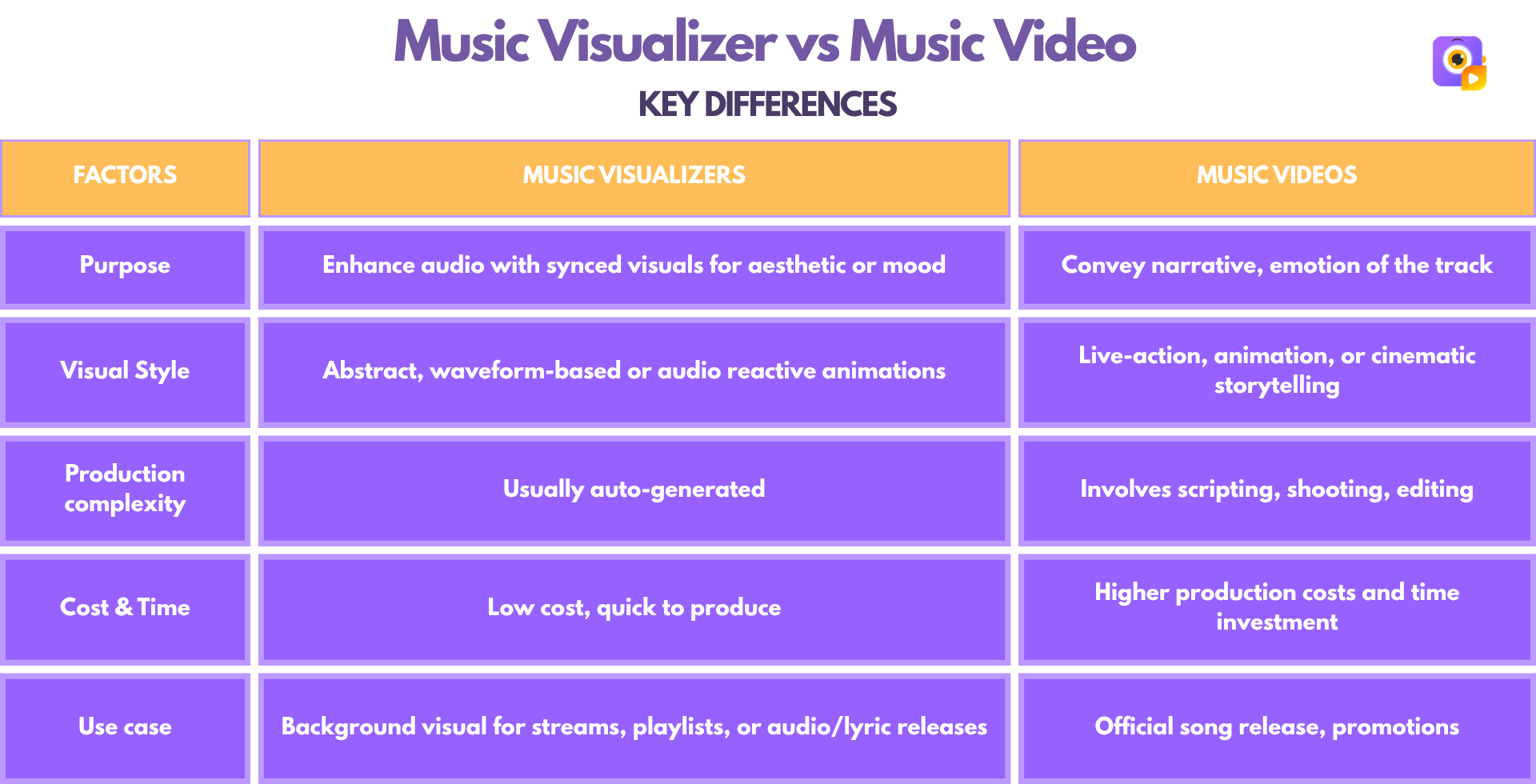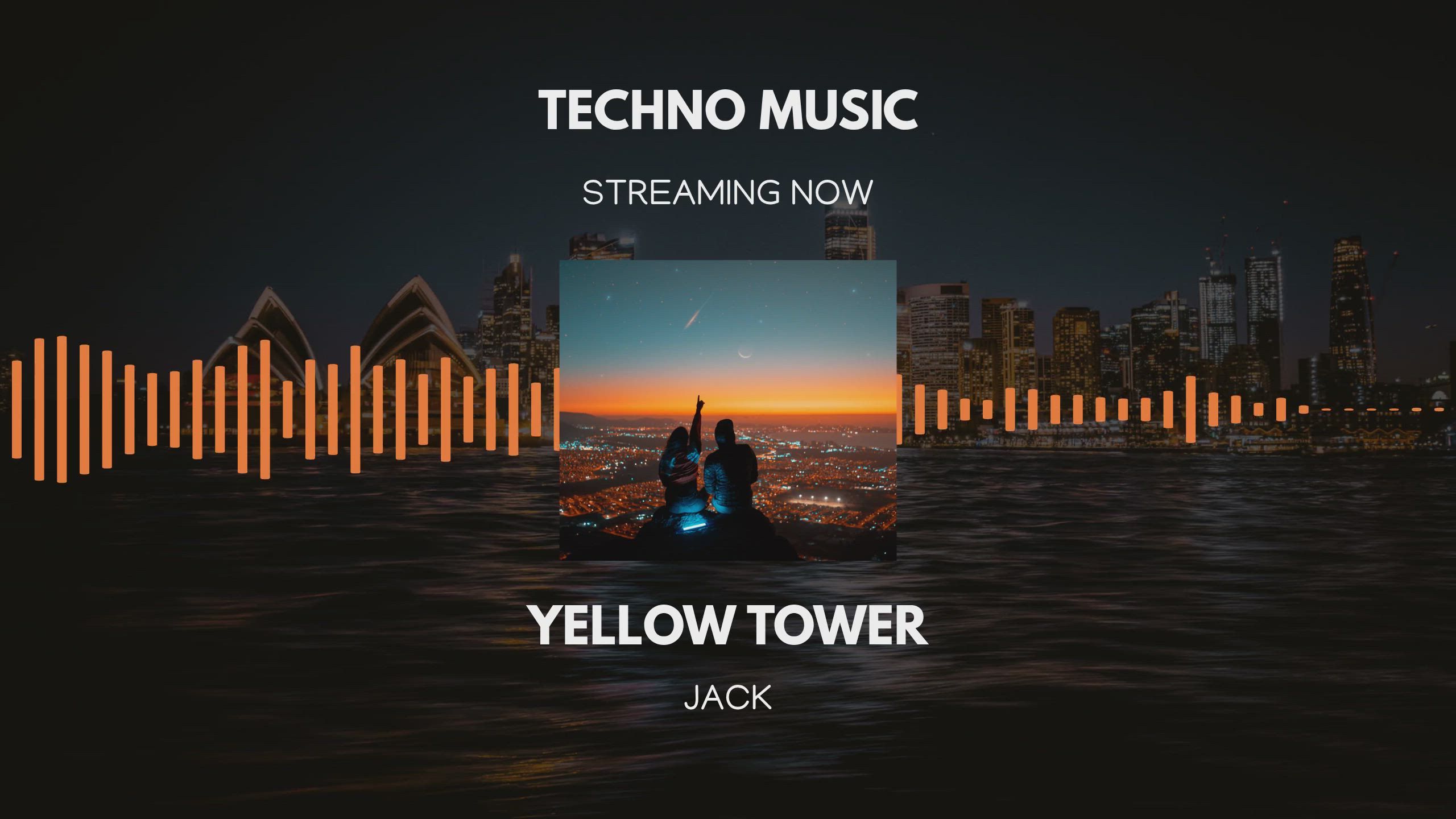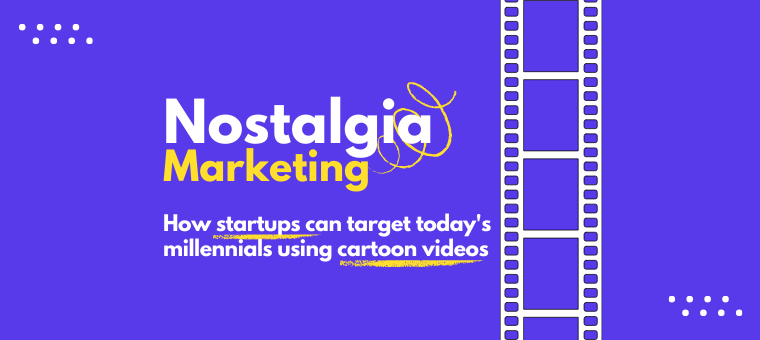Visualizer vs Music Video [Which Is The Best Fit For Your Audio?]
Music is a huge part of our everyday life.
When you really think about it, it's always in the background, whether on the way to work, in the middle of a busy day, or even when we're just doing the dishes.
But sound alone isn’t the whole story.
The visuals that go with it can make or break a song.
If you’re an independent artist, a content creator, or part of a music label, you know how important pairing a track with engaging visuals can be.
But, hey, not everyone has the budget for a full-scale music video, and that’s where the visualizer vs music video debate begins.
Which one should you choose?
Both add a visual layer to your music, and both can help boost engagement.
But dig a little deeper, and you’ll find that they serve very different purposes, suit different budgets, and offer unique creative opportunities.
To make sense of it all, here’s what we’ll explore -
- What is a music video?
- What is a music visualizer?
- Visualizer vs Music Video - Key Differences
- Wrap-up on Visualizer vs Music Video
What is a music video?
A music video, in simple terms, is a short video that accompanies a song.
They are often planned in detail, from script and storyboarding to filming and editing.
The music videos can be
- narrative-driven (like Childish Gambino’s This Is America),
- performance-based (like Bruno Mars & Lady Gaga’s Die With A Smile),
- or conceptual (like Billie Eilish’ bury a friend),
depending on the artistic direction.

Over the years, music videos have changed, from MTV golden days to YouTube premieres, constantly adapting and appealing to the trends and audience behavior.
Purpose of Music Video in Industry
Music videos are generally aimed at building a deeper, emotional connection between the artist and their audience.
They help communicate the mood, message, or emotion of a track, making the song itself more memorable and shareable.
Beyond artistic expression, they also serve as a powerful promotional tool. A well-made video can boost visibility, spark conversations, and even become a cultural moment.
For example, you most likely remember music videos like PSY’s Gangnam Style or Britney Spears’ Toxic. Both are iconic not just for their music but also for their bold visuals, storytelling, and choreography.

PSY’s GANGNAM STYLE took the world by storm, making everyone do the hook step.
In fact, it introduced millions of people, including me, to Korean pop culture and proved just how much a music video can boost a song’s popularity.
In many cases like these, the music video becomes just as legendary as the track itself.
But what really keeps fans hooked is what happens beyond the polished final cut.
The behind-the-scenes content that artists often share gives fans a deeper look into the creative process and the efforts taken to create the video.
The above video shows the process behind the hit music video, from wardrobe choices to subtle direction cues and emotional takes.
It reminds us that every frame is intentional, and every detail tells a story.
Such videos help the audience connect more deeply with the music and the artist. It also gives aspiring directors and production teams a valuable peek into the creative decisions.
While it’s inspiring to see these detailed productions come to life, the reality for many new artists is quite different.
Starting out as an independent artist is no joke. You’re likely producing music from your bedroom or a small home studio, often juggling everything from songwriting to mixing on your own.
You may not have the budget for high-end music videos, lighting setups, camera crews, or production teams.
Marketing often falls entirely on your shoulders, like building your own audience on platforms like YouTube, Spotify, or TikTok.
Even something as simple as having a video to accompany your track becomes a financial burden.

In the early stages, most artists do it all themselves, just to get that first breakthrough.
But don’t worry. This is where you can make use of music visualizers.
Instead of dropping hundreds or thousands on a full music video, independent artists can release visually appealing content through visualizers.
This not only helps keep your OG fans engaged but also boosts discoverability on platforms like YouTube. Plus, it adds a polished, professional feel to your music releases.
But first, let’s understand the term music visualizer better.
What is a music visualizer?
A music visualizer is a tool/software that generates animated visuals that move in sync with the beat and energy of the music.
These visualizers are often abstract shapes, waveforms, or color patterns of song elements like beats, tempo, and frequency.
If you were born in the 90s and early 2000s, you must have seen music visualizers in Windows Media Player while listening to your favorite Backstreet Boys’ track.
But have you wondered how they work?
The visualizers analyze the track’s frequency and volume, then turn that data into visuals that move and change in sync with the music.
Beyond being visually engaging, visualizers also make music more inclusive. For people who are deaf or hard of hearing, they offer a way to see and even feel the rhythm and energy of a track.
As visual-based music experiences grow in popularity, especially among independent artists, visualizers have become a creative alternative to traditional music videos.
Take British electronic and techno producer Max Cooper, for example. Early in his career, he released official videos as visualizers. They are simple yet impactful.
Today, he's known for intricate animations and complex visuals in his music videos. This shows how visualizers can kickstart careers and grow alongside an artist’s creative journey.
With more artists relying on creating stunning visualizers on a budget and without technical expertise, many tools have emerged, making it simpler than ever for artists at any level to bring their music to life visually!
There are some popular tools and software for creating visualizers, like After Effects, VSDC, and, of course, Animaker’s own Music Visualizer.
Animaker’s tool is made to make the process as simple as possible. Don’t believe me? Here’s how it is much better -
- No downloads, no complicated setup - It’s 100% web-based, so you can start right from your browser.
- Drag, drop, done - No steep learning curves or technical headaches. Just upload your track, pick a visual style, customize, and you’re good to go.
- Studio-quality visuals in minutes - Skip the hours of editing. Animaker delivers polished, eye-catching animations effortlessly.
- Affordable, without the compromise - Unlike After Effects’ high subscription fees or limited free tools, Animaker strikes the perfect balance of power and price.

With Animaker, you can choose from styles like pulsating waves, geometric shapes, radial forms, bar animations, and more!
There are also customization options like changing colors and controlling the amplitude (which is how loud or intense the sound is).
Plus, with Animaker’s 100M+ stock media, you can add a video or image background to your visualizers.
Take a look at the visualizer below, which was made using Animaker!
If you want to learn how to make a music visualizer like this with Animaker in detail, check out the article linked. Alternatively, if you want a video guide, check out the video below.
Now that we have seen what music videos and music visualizers are, let’s see how they are different.
Visualizer vs Music Video - Key Differences
While both music visualizers and music videos add a new layer to the track, they serve different purposes.

Here’s where they mainly differ -
A) Production complexity
This is one of the most obvious distinctions.
Music visualizers are quick and template-based, while music videos require full-scale production with more time, budget, and planning.
Here's a glimpse behind the scenes of One Direction’s “Steal My Girl”, packed with elaborate sets, crew coordination, and days of shooting.
In the video, you’ll see everything from cranes and set designers to animal handlers, choreographers, and more - all working together to bring one song to life.
This is a great example of how traditional music videos can demand huge resources that many independent artists simply don’t have starting out.
B) Artistic approach
Visualizers highlight rhythm and mood to keep the focus on the music, while music videos offer creative freedom to tell stories or showcase performances.
C) Audience Engagement
Music visualizers offer a passive, looping experience, while music videos aim to capture attention, spark a reaction, and encourage repeat views.
So, how do you decide whether to go with a music visualizer or a full music video?
Here’s a quick recap to help you choose the right format based on your goals -

Wrap-up on Visualizer vs Music Video
When it comes to the debate of visualizer vs music video, the best choice depends on your goals, resources, and artistic direction.
The key is to think strategically. Whichever route you choose, know that both have the power to elevate your sound when used with purpose.
And if you’re not ready for a full-blown video production just yet, don’t let that stop you from sharing your music in a visually compelling way.
Animaker’s Music Visualizer gives you a no-fuss, emotionally resonant way to add visuals to your tracks, without needing a big budget or technical know-how.
Because every song deserves to be seen as much as it’s heard.




